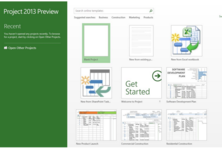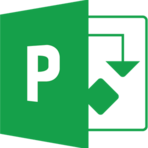Project management plays a significant part in accomplishing a wide variety of tasks within a team-based environment or an organization as a whole. It is integral in facilitating different aspects of a project and ensuring things get done on time and in-line with the client’s requests and preferences.
Depending on the organization and the type of projects they tackle, requirements can come in varying forms, including multiple budget restrictions, deadlines and stakeholders. Regardless of the type of project or the specific tasks that are assigned to each of the team members, there are project management software solutions in the market that are designed to help get things done as easily and efficiently as possible.
There are two basic types of project management solutions; Cloud-based project management software and on-premise software. On-premise project management software offers a wide variety of tools and features you need to effectively manage both simple and complex enterprise-level projects.
While cloud-based project management tools are widely used by small businesses and startups, on-premise solutions are mostly tailored for medium- and large-sized enterprises.

 Microsoft Project is a fully-featured on-premise project management solution used by organizations of all sizes that enables users to easily manage tasks, resources, timesheets, payroll, invoicing, reports, business intelligence analytics and more.
Microsoft Project is a fully-featured on-premise project management solution used by organizations of all sizes that enables users to easily manage tasks, resources, timesheets, payroll, invoicing, reports, business intelligence analytics and more.
While the main difference between on-premise software and cloud-based solutions is the server they are deployed on, on-premise solutions offer many different features and tools compared to cloud-based solutions.
Full-featured on-premise solutions provide you with the tools to help monitor projects from a strategic perspective. They help you streamline all connected tasks and projects your team is working on. This is in an effort to improve the efficiency and productivity of everyone involved.
Many common features and tools that come with on-premise software solutions are not that different from cloud-based project management services. These features include project portfolio management (PPM), task management, resource management, file sharing, scheduling, instant messaging, video conferencing, third-party app integrations and conclusive security measures.
This is one of the core features of enterprise-level on-premise project management software. PPM features allow for easy resource allocation to maximize efficiency and productivity. It is a form of collaborative tool that enables you to schedule the availability and usage of certain apps and tools so that processes don’t get bogged down. All team members can perform their assigned tasks without having to wait for a particular resource to become available.
PPM is especially useful to organizations that handle multiple projects at a time, as it gives them the ability to balance their workloads and centralize the projects for optimal efficiency. It also gives users a complete view of what they’re working on so they can prioritize certain aspects of a project that need their immediate attention.
File sharing is a vital component in any project management or collaborative tool, regardless of the deployment method. It allows you and your team to easily upload and share important files pertaining to the project your company is working on; all is done within the platform itself.
Authorized personnel and team members will be able to access files and make the necessary changes, effectively streamlining the flow of information within the team and everyone involved with the project, including the client.
Some of the more complex file sharing features that come with on-premise solutions include audit trails and permission settings. This is to make sure all the information going through the platform, specifically the more sensitive data, is well organized and secure. If you are a company that employs off-site personnel, then a cloud-based solution might more suited to your needs as it extends file-sharing services to mobile devices.
Video conferencing features tend to be more expensive, hence the reason why they're only available in on-premise project management software solutions. Some on-premise software services offer video conferencing as a separate module that you can incorporate into your current project management solution for an additional fee. While this feature can be costly for SMBs at an enterprise level this is certainly a useful tool, especially for remote communication.
The most common tool that you can expect to find in virtually any project management software, on-premise or otherwise, is text-based internal messaging. It is significantly cheaper than external solutions and is a very effective collaborative tool as it allows you to communicate with other members of your team instantly and in real-time.
Seamless integration with other business process applications is crucial to any project management software. If you’re currently using apps like Skype, Dropbox, or Microsoft Office as part of your project management and day-to-day operation, then your on-premise software solution should allow you to integrate all of those tools without any issues. This also applies to more complex systems like CRMs.
Security is another aspect that is very important when it comes to on-premise project management software. In fact, it is one of the main reasons why most medium- and large-sized companies generally go for on-premise systems, security and total control over their project and task management processes.
A good example of an on-premise project management solution that offers almost all of these features is Microsoft Office Project Management. It is already fully integrated with Microsoft Office, which almost all companies around the world use, and it offers a wide variety of features and capabilities.
Some of these features include work flexibility, quick and easy project planning, robust business intelligence capabilities, file sharing, and it even comes with built-in templates to help you start quickly with your projects.
There are a lot of benefits from implementing on-premise project management software, especially if you are a company that handles multiple projects and wants total control of all aspects of a project from start to finish.
Just like cloud-based systems, on-premise software deployment of project management solutions allows you to keep a close eye on every task your team is working on, even the minor ones. This will help make sure every aspect of the project, including the tiniest details, is taken care of in a timely manner.
The platform also enables you to spot any discrepancies and potential problems in real-time before they become serious issues that could delay the development process of your project and even affect other projects you’re currently working on. The BI feature of Microsoft Project Management, for example, can give you valuable insights to keep all team members working on the same page, minimizing potential errors and duplicate tasks.
By having the ability to detect potential problems early on, you also effectively minimize downtime when managing multiple projects. On-premise project management software solutions are designed to help teams and decision-makers complete their projects successfully and on time through a wide variety of collaborative toolsets and features.
As previously mentioned, security is one of the main reasons most enterprises often go with on-premise software solutions, along with having complete control over their projects. Unlike cloud-based project management solutions where third-party service providers may be given access to company data, on-premise solutions are managed and maintained in-house, there is very little risk of unauthorized access and data contamination.
This means that your organization has complete control over who gets to access vital project information from your company’s servers and databases.
When used effectively, on-premise project management software gives organizations better visibility and transparency over daily operations, advanced reporting and insights into potential issues, better security and control over their information and advanced features and capabilities that help increase productivity and efficiency when completing projects.